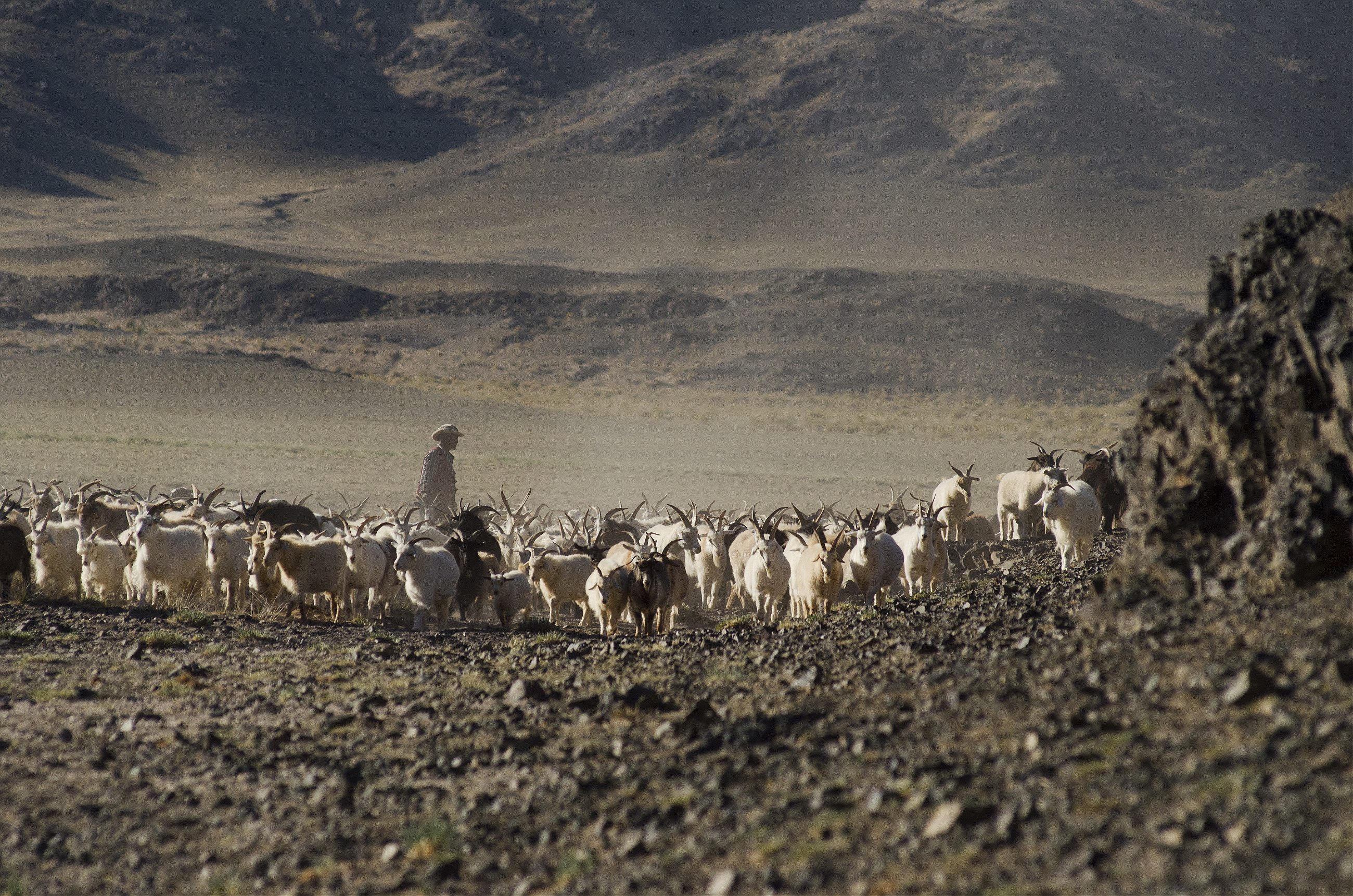In Mongolia, traditional Bankhar dogs are returning to their traditional place in society.
The question seems pretty straightforward. “Could we film your dogs while they’re guarding the sheep?”
But herder Nergui Batdelger looks hesitant. These are working dogs, she reminds us. Their first social interactions as puppies were with sheep. They’ve grown up alongside the herd, taking their meals in the field with the sheep, even sleeping alongside them at night. They see the herd as family, and their job is to keep them safe.
As we head across the field, I scan the herd for her two black dogs, half expecting a pair of jaws to clamp down around my neck before I even see them coming; the dog version of a velociraptor attack in Jurassic Park. When they do notice us, they come full tilt like the trained guardian dogs they are, but with far more bark than bite. Batdelger calls them off when they get too close, and after a few minutes, they accept that we’re not there to attack the herd.



Then it’s our turn to be tough. We’ve been told not to pet the dogs, even if they approach us. It’s part of their training not to become too attached to humans. When their hackles settle and they do approach, however, it’s hard to resist. These 100- to 120-pound dogs look like a cross between a Tibetan Mastiff, a Bernese Mountain dog, and a teddy bear. I immediately want to take one home.
These are Bankhars, a dog breed that co-evolved with nomadic peoples in Mongolia for generations, protecting livestock from predators in return for shelter and food from their human compatriots. During the 20th century, however, the Bankhar tradition eroded under Soviet occupation. Herding families were forced into cooperatives where fears the dogs would spread disease led to the release or extermination of many. Today, few “pure” Bankhar dogs remain in Mongolia.


Enter the Mongolian Bankhar Dog Project (MBDP), a joint Mongolian-U.S. effort to breed and reintroduce Bankhar guardian dogs to nomadic families. The goal? To help keep the herding tradition alive across Mongolia and reduce human-wildlife conflict in the face of declining resources and land due to climate change. MBDP was founded in 2011 by American biologist Bruce Elfström after he learned from herders that Bankhar dogs had historically helped preserve predator-prey relationships in Mongolia.
After performing DNA analysis on dogs in various parts of the country, MBDP procured a small breeding group of Bankhars. The first Bankhar pups were born in January 2015 and placed with herding families across Mongolia later that year. Since Bankhar pups need two years of training before they can protect a herd alone, it’s too soon to say whether the project has been a success. But the word is out, and the MBDP says they’re getting more and more requests from herders for a pup of their own.


